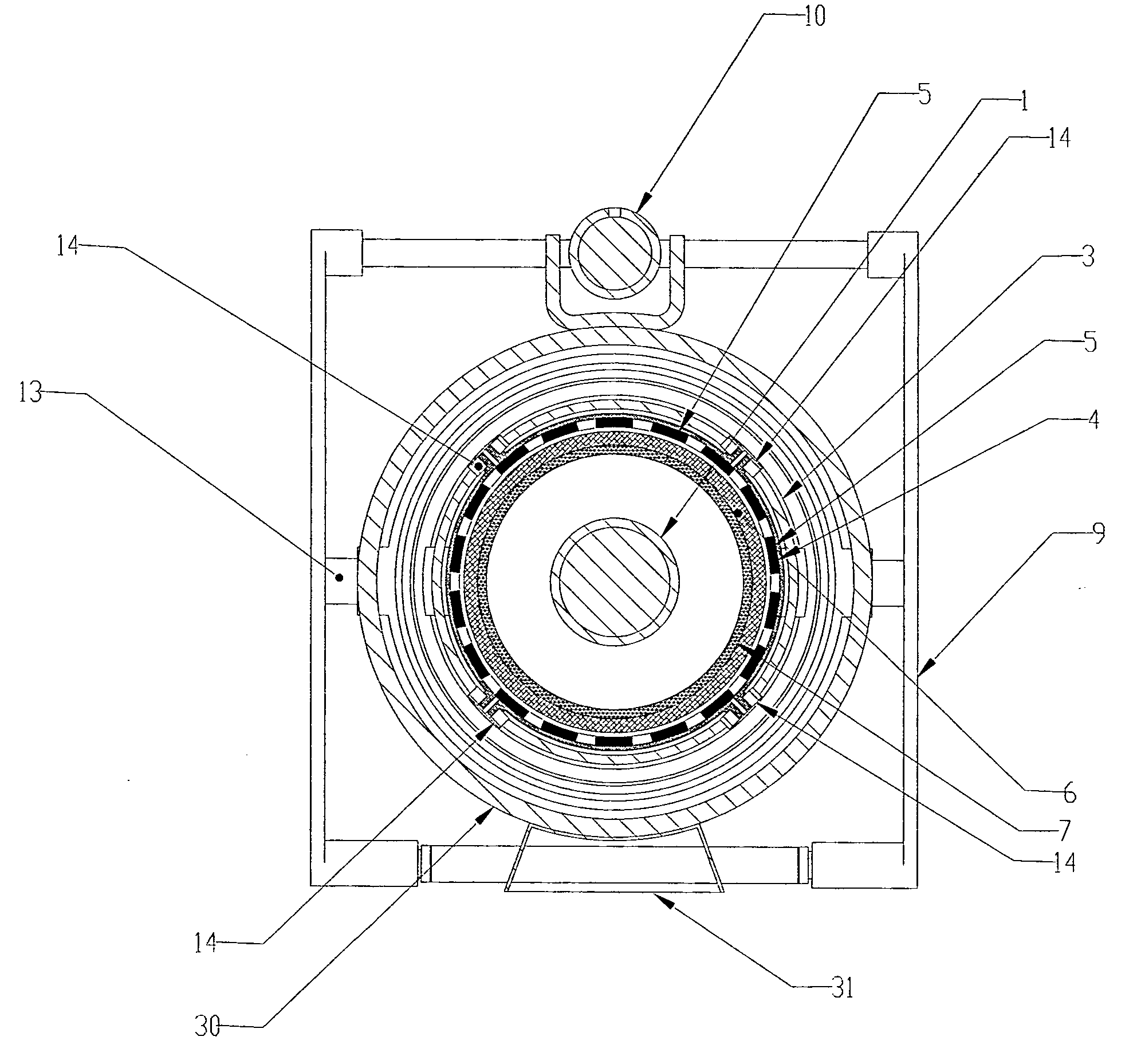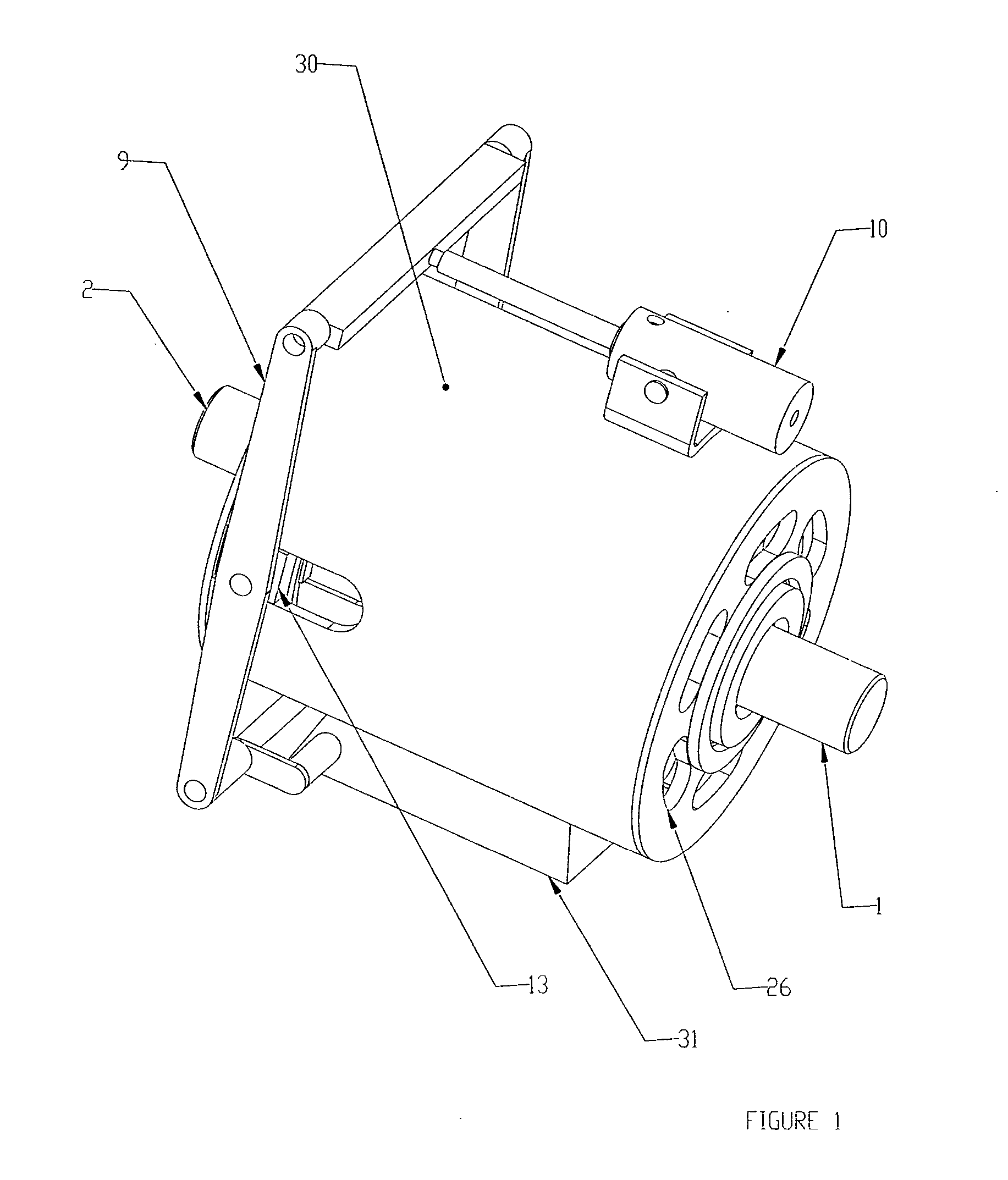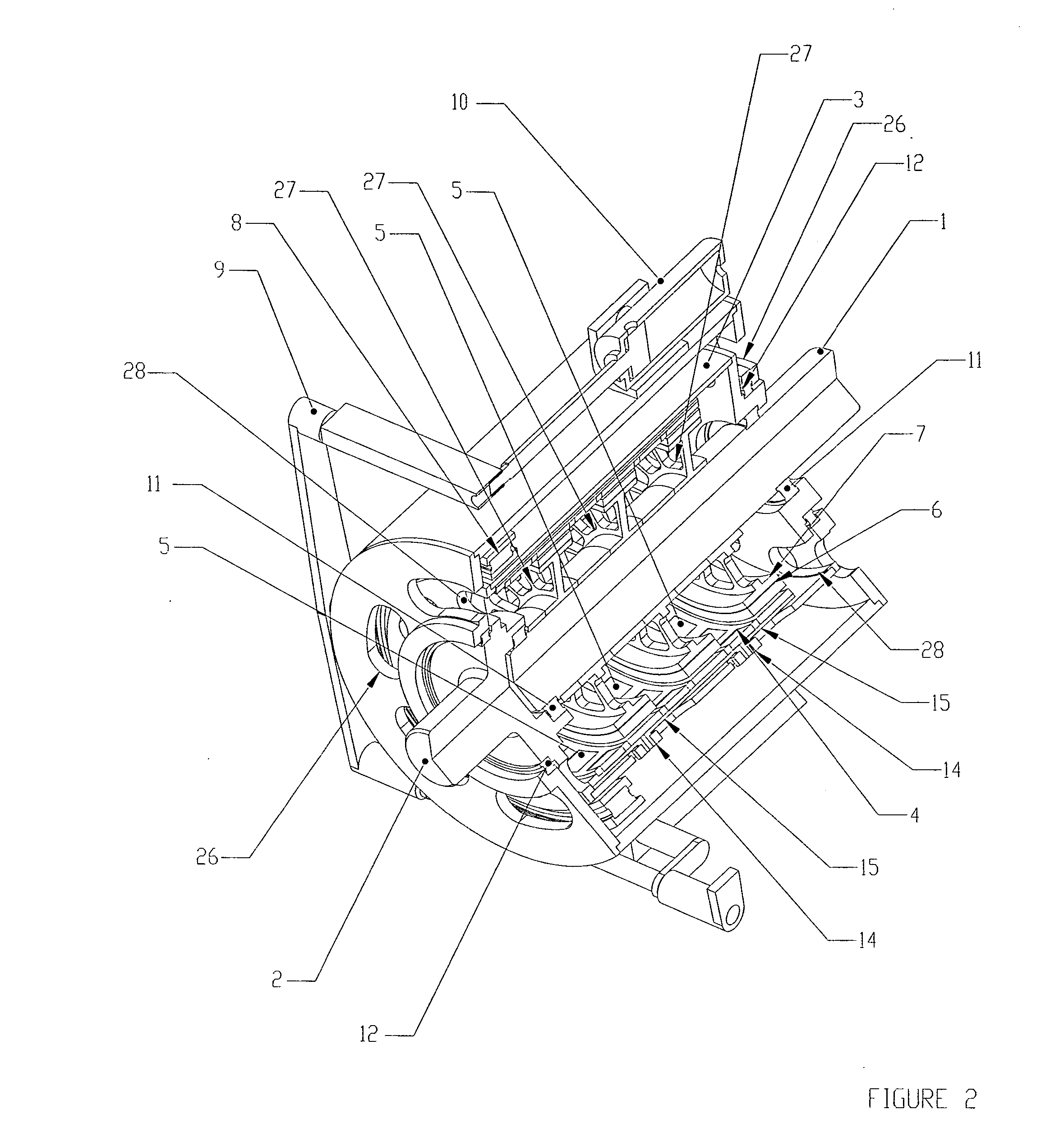Apparatus for transferring torque magnetically
a magnetic transfer and torque technology, applied in mechanical devices, electrostatic holding devices, asynchronous induction clutches/brakes, etc., can solve the problems of limited devices to specific set gaps and output, limited eddy current devices to three, and high cos
- Summary
- Abstract
- Description
- Claims
- Application Information
AI Technical Summary
Benefits of technology
Problems solved by technology
Method used
Image
Examples
Embodiment Construction
[0022] Detailed descriptions of preferred embodiments are provided herein. It is to be understood, however, that the present invention may be embodied in various forms. Therefore, specific details disclosed herein are not to be interpreted as limiting, but rather as a basis for the claims and as a representative basis for teaching one skilled in the art to employ the present invention in virtually any appropriately detailed system, structure or manner.
[0023] Referring to FIGS. 1 through 4, a first embodiment of the invention is shown and described as it applies to a variable speed drive application. The first part of the variable speed torque transfer apparatus described in this preferred embodiment consists of a primary rotary member comprising an input shaft rotor (2), a support cylinder (3), and a magnet-carrying rotor (4), all mechanically connected together, and constrained to rotate at the same angular velocity together. The second part of the variable speed torque transfer a...
PUM
 Login to View More
Login to View More Abstract
Description
Claims
Application Information
 Login to View More
Login to View More - R&D
- Intellectual Property
- Life Sciences
- Materials
- Tech Scout
- Unparalleled Data Quality
- Higher Quality Content
- 60% Fewer Hallucinations
Browse by: Latest US Patents, China's latest patents, Technical Efficacy Thesaurus, Application Domain, Technology Topic, Popular Technical Reports.
© 2025 PatSnap. All rights reserved.Legal|Privacy policy|Modern Slavery Act Transparency Statement|Sitemap|About US| Contact US: help@patsnap.com



